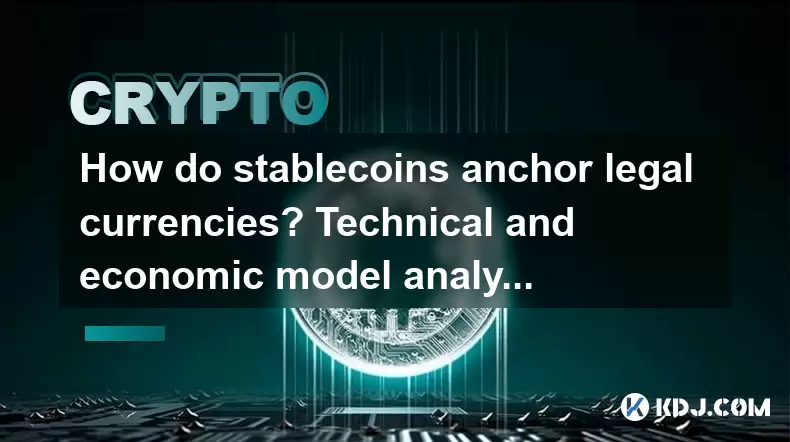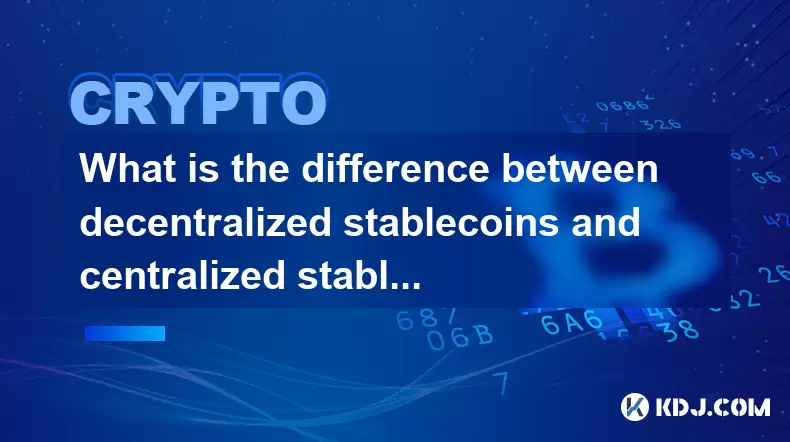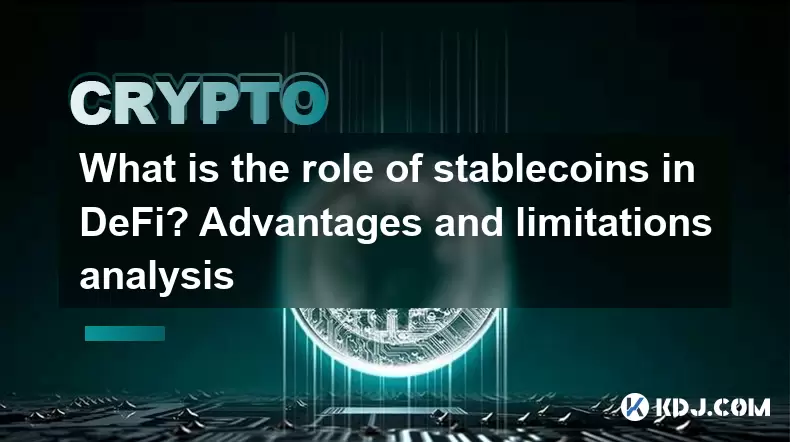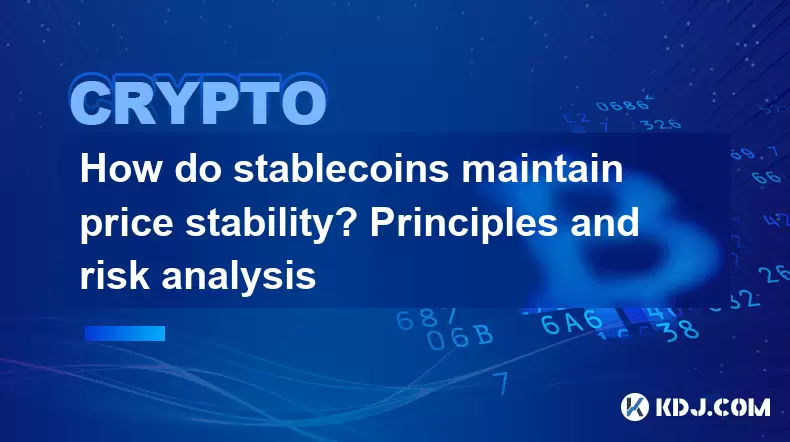-
 Bitcoin
Bitcoin $118400
0.47% -
 Ethereum
Ethereum $3836
2.20% -
 XRP
XRP $3.157
2.98% -
 Tether USDt
Tether USDt $0.9999
-0.03% -
 BNB
BNB $801.5
1.31% -
 Solana
Solana $180.9
2.07% -
 USDC
USDC $0.9999
-0.02% -
 Dogecoin
Dogecoin $0.2225
2.50% -
 TRON
TRON $0.3285
-1.02% -
 Cardano
Cardano $0.7789
2.60% -
 Hyperliquid
Hyperliquid $43.60
2.39% -
 Sui
Sui $3.892
4.41% -
 Stellar
Stellar $0.4229
3.34% -
 Chainlink
Chainlink $18.01
3.98% -
 Hedera
Hedera $0.2745
6.77% -
 Bitcoin Cash
Bitcoin Cash $582.3
3.38% -
 Avalanche
Avalanche $23.77
1.04% -
 Ethena USDe
Ethena USDe $1.001
0.01% -
 Toncoin
Toncoin $3.493
3.59% -
 Litecoin
Litecoin $110.0
2.48% -
 UNUS SED LEO
UNUS SED LEO $8.936
-0.37% -
 Shiba Inu
Shiba Inu $0.00001304
2.49% -
 Uniswap
Uniswap $9.999
1.09% -
 Polkadot
Polkadot $3.897
3.26% -
 Monero
Monero $308.6
-0.83% -
 Dai
Dai $0.9999
-0.01% -
 Bitget Token
Bitget Token $4.504
-0.04% -
 Pepe
Pepe $0.00001154
2.95% -
 Cronos
Cronos $0.1471
3.06% -
 Ethena
Ethena $0.6691
19.53%
How do stablecoins anchor legal currencies? Technical and economic model analysis
Stablecoins maintain price stability by pegging their value to external assets like fiat currencies or through algorithmic supply adjustments, offering utility in transactions and as a digital store of value.
Jun 16, 2025 at 08:43 am

Understanding the Concept of Stablecoins
Stablecoins are a category of cryptocurrencies designed to maintain a stable value relative to a specific asset, most commonly fiat currencies like the U.S. dollar or Euro. Unlike volatile cryptocurrencies such as Bitcoin and Ethereum, stablecoins aim to provide price stability by anchoring their value to an external reference point—typically legal tender. This makes them particularly useful for transactions, remittances, and as a store of value within the digital economy.
The core mechanism behind this anchoring lies in the design of the stablecoin’s economic model and its technical implementation on the blockchain. There are several types of stablecoins, including fiat-collateralized, crypto-collateralized, and algorithmic stablecoins, each employing distinct strategies to ensure price stability.
Fiat-Collateralized Stablecoins: The Direct Anchoring Mechanism
Fiat-collateralized stablecoins are the most straightforward type. These tokens are backed by reserves of traditional fiat currency held in bank accounts or other custodial services. For every unit of stablecoin issued, there should be an equivalent amount of fiat currency stored securely.
- A user deposits $1 USD into a reserve account.
- In return, they receive 1 USDT (Tether) or 1 USDC (USD Coin) on the blockchain.
- These tokens can be transferred, traded, or used across platforms while maintaining a 1:1 peg with the U.S. dollar.
This system relies heavily on trust in the issuing entity and transparency in audits. Regular attestations and third-party verification are crucial to maintaining confidence in the peg. If the issuer fails to hold sufficient reserves or if there's a lack of transparency, the stablecoin may lose its peg and face redemption issues.
Crypto-Collateralized Stablecoins: Overcollateralization Strategy
Crypto-collateralized stablecoins use other cryptocurrencies as collateral instead of fiat. Because these underlying assets are volatile, overcollateralization is necessary to absorb price fluctuations and maintain stability.
For instance:
- A user locks up $200 worth of ETH to generate $100 worth of DAI.
- The collateral ratio must remain above a certain threshold (e.g., 150%).
- If the value of ETH drops significantly, the system automatically liquidates part of the collateral to protect the peg.
These stablecoins operate through smart contracts on decentralized platforms like MakerDAO. They offer greater decentralization compared to fiat-backed models but introduce complexity due to reliance on volatile assets and automated risk management protocols.
Algorithmic Stablecoins: Peg Maintenance via Supply Adjustment
Algorithmic stablecoins do not rely on collateral but instead use algorithms and smart contracts to adjust supply dynamically based on demand. When the price of the stablecoin rises above the target peg (e.g., $1), new coins are minted to bring it back down. Conversely, when the price falls below $1, coins are burned or removed from circulation to increase scarcity.
Some systems also incorporate a secondary token to stabilize the primary stablecoin:
- If the stablecoin price dips below $1, users can burn the stablecoin to receive $1 worth of the secondary token.
- This creates arbitrage opportunities that help restore the peg.
However, this model has proven vulnerable to market sentiment and liquidity risks. Several algorithmic stablecoins have collapsed due to rapid loss of confidence and insufficient mechanisms to enforce the peg during stress periods.
Economic Models and Risk Factors in Stablecoin Pegging
Each stablecoin model carries unique economic implications and potential risks:
- Fiat-collateralized: Risks include centralization, regulatory scrutiny, and counterparty risk with custodians.
- Crypto-collateralized: Subject to volatility in the underlying crypto assets and require high collateral ratios.
- Algorithmic: Highly sensitive to market psychology and prone to death spirals when confidence erodes.
Economic incentives play a key role in maintaining pegs. Arbitrageurs often step in to buy or sell stablecoins at deviations from the peg, profiting from the difference and restoring equilibrium. However, the effectiveness of this mechanism depends on liquidity depth and market structure.
Transparency, governance, and regulatory compliance further influence the sustainability of stablecoin pegs. Regulatory developments in jurisdictions like the United States and European Union increasingly focus on stablecoins due to their systemic importance in the crypto ecosystem.
Technical Infrastructure Supporting Stablecoin Stability
From a technical standpoint, stablecoins operate on various blockchain networks using standardized token protocols such as ERC-20 (Ethereum), TRC-20 (Tron), or BEP-20 (Binance Smart Chain). The choice of blockchain affects transaction speed, cost, and security.
Smart contracts govern the minting, burning, and redemption processes. These contracts must be audited rigorously to prevent exploits or manipulation. Custodial solutions for fiat-backed stablecoins must also integrate with banking systems and comply with anti-money laundering (AML) and know-your-customer (KYC) regulations.
Oracles may be used in some models to fetch real-time price data from external sources, enabling dynamic adjustments. However, reliance on oracles introduces potential vulnerabilities if the data feed is compromised or manipulated.
Frequently Asked Questions
Q: Can stablecoins be fully decentralized while maintaining a peg to legal currencies?
A: Fully decentralized stablecoins face significant challenges in maintaining a peg without centralized oversight or collateral guarantees. While projects are exploring hybrid models, achieving both decentralization and stability remains complex.
Q: How do stablecoins handle inflation in the backing currency?
A: Since stablecoins are pegged to legal currencies, they inherently reflect the inflationary or deflationary characteristics of those currencies. The peg does not insulate them from macroeconomic trends affecting the fiat currency.
Q: Are all stablecoins redeemable for fiat at any time?
A: Not necessarily. While many fiat-backed stablecoins offer redemption mechanisms, some impose restrictions based on jurisdiction, KYC requirements, or platform-specific rules. Always verify the issuer’s policies before assuming redeemability.
Q: What happens if a stablecoin issuer goes bankrupt?
A: In the event of an issuer’s insolvency, holders may face delays or partial recovery of their funds, depending on legal protections and the availability of segregated reserves. This underscores the importance of transparency and regulatory safeguards.
Disclaimer:info@kdj.com
The information provided is not trading advice. kdj.com does not assume any responsibility for any investments made based on the information provided in this article. Cryptocurrencies are highly volatile and it is highly recommended that you invest with caution after thorough research!
If you believe that the content used on this website infringes your copyright, please contact us immediately (info@kdj.com) and we will delete it promptly.
- SEC, Crypto, and Securities: Navigating the New Frontier
- 2025-08-01 05:10:12
- Cardano (ADA) Market Cap: Can It Compete with Emerging Cryptocurrencies and Meme Coins?
- 2025-08-01 04:30:12
- SEC, Crypto, and On-Chain: Navigating the Regulatory Maze
- 2025-08-01 02:31:40
- Jito Labs, Solana, and Liquid Staking: Riding the Wave of Innovation
- 2025-08-01 03:50:12
- Perpetual DEX: Navigating Onchain Trading and Solving Core Problems, a NY Perspective
- 2025-08-01 03:57:53
- Bitcoin Bullish Market: How Long Positions are Boosting the Crypto King
- 2025-08-01 02:35:33
Related knowledge

What is the difference between decentralized stablecoins and centralized stablecoins? Pros and cons comparison
Jun 15,2025 at 09:42am
What Are Stablecoins and Why Do They Matter?Stablecoins are a category of cryptocurrencies designed to maintain a stable value, usually pegged to an e...

What is the role of stablecoins in DeFi? Advantages and limitations analysis
Jun 14,2025 at 06:28am
Understanding Stablecoins in the DeFi EcosystemStablecoins play a pivotal role in the decentralized finance (DeFi) landscape by providing a bridge bet...

How do algorithmic stablecoins work? Potential risks and market impact
Jun 12,2025 at 02:07pm
Understanding Algorithmic StablecoinsAlgorithmic stablecoins are a type of cryptocurrency designed to maintain a stable value relative to a specific a...

How do stablecoins anchor legal currencies? Technical and economic model analysis
Jun 16,2025 at 08:43am
Understanding the Concept of StablecoinsStablecoins are a category of cryptocurrencies designed to maintain a stable value relative to a specific asse...

How do stablecoins maintain price stability? Principles and risk analysis
Jun 11,2025 at 12:01am
Understanding the Mechanisms Behind Stablecoin StabilityStablecoins are a category of cryptocurrencies designed to minimize price volatility, often pe...

What is the operating mechanism of stablecoins? In-depth exploration of its stability principle
Jun 10,2025 at 09:28pm
Understanding the Core Concept of StablecoinsStablecoins are a unique category within the cryptocurrency market, designed to address one of the most s...

What is the difference between decentralized stablecoins and centralized stablecoins? Pros and cons comparison
Jun 15,2025 at 09:42am
What Are Stablecoins and Why Do They Matter?Stablecoins are a category of cryptocurrencies designed to maintain a stable value, usually pegged to an e...

What is the role of stablecoins in DeFi? Advantages and limitations analysis
Jun 14,2025 at 06:28am
Understanding Stablecoins in the DeFi EcosystemStablecoins play a pivotal role in the decentralized finance (DeFi) landscape by providing a bridge bet...

How do algorithmic stablecoins work? Potential risks and market impact
Jun 12,2025 at 02:07pm
Understanding Algorithmic StablecoinsAlgorithmic stablecoins are a type of cryptocurrency designed to maintain a stable value relative to a specific a...

How do stablecoins anchor legal currencies? Technical and economic model analysis
Jun 16,2025 at 08:43am
Understanding the Concept of StablecoinsStablecoins are a category of cryptocurrencies designed to maintain a stable value relative to a specific asse...

How do stablecoins maintain price stability? Principles and risk analysis
Jun 11,2025 at 12:01am
Understanding the Mechanisms Behind Stablecoin StabilityStablecoins are a category of cryptocurrencies designed to minimize price volatility, often pe...

What is the operating mechanism of stablecoins? In-depth exploration of its stability principle
Jun 10,2025 at 09:28pm
Understanding the Core Concept of StablecoinsStablecoins are a unique category within the cryptocurrency market, designed to address one of the most s...
See all articles

























































































